Discover 15 hidden attractions, cool sights, and unusual things to do in Grudziądz (Poland). Don't miss out on these must-see attractions: Spichlerz, Muzeum im. księdza doktora Władysława Łęgi, and Pałac Opatek. Also, be sure to include Kościół pw. Ducha Świętego in your itinerary.
Below, you can find the list of the most amazing places you should visit in Grudziądz (Kuyavian-Pomeranian).
Table of Contents
Spichlerz
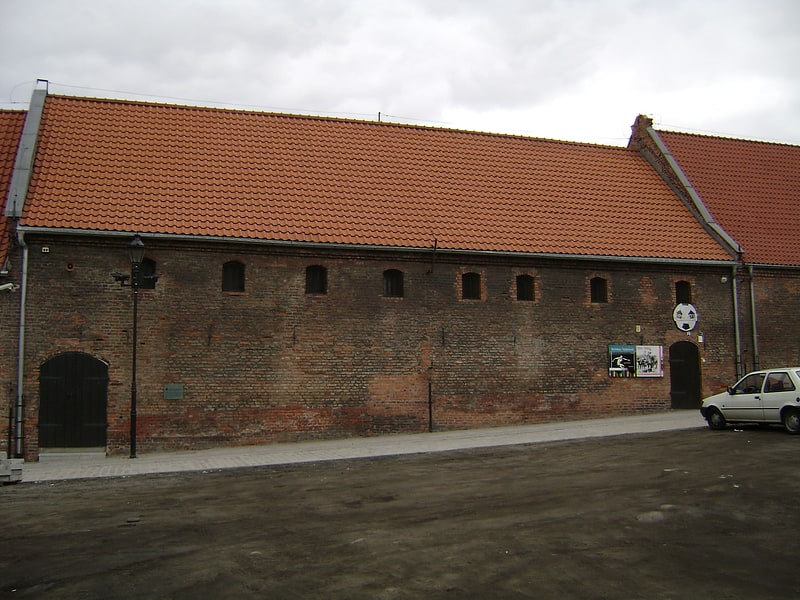
Grudziądz Granaries is a unique 14th-century fortification complex of river bank granaries on the Vistula river in Grudziądz, Poland.[1]
Address: 13 Spichrzowa, Grudziądz
Muzeum im. księdza doktora Władysława Łęgi
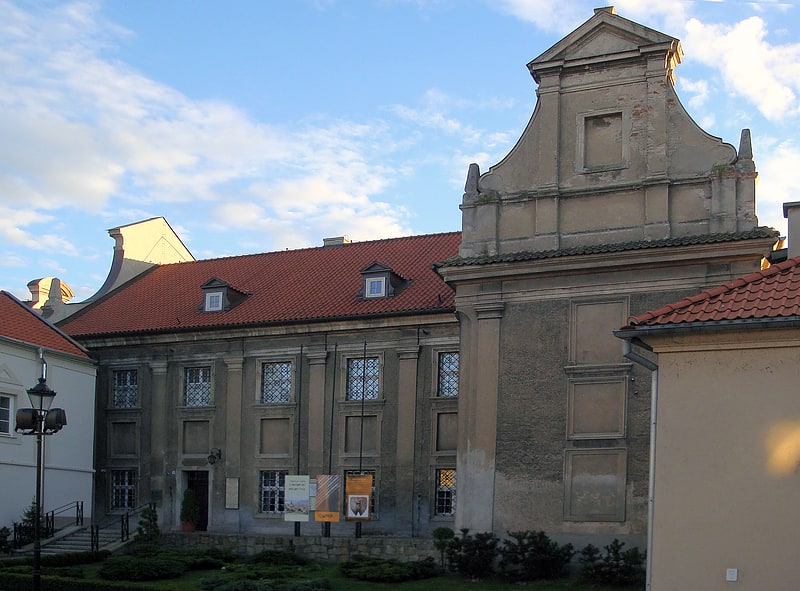
Rev. Dr. Władysław Łęga Museum in Grudziądz - museum founded in 1884 in Grudziądz, since 2005 it has been named after Władysław Łęga.
In 1883, the Society of Antiquities (German: Altertumsgesellschaft) was established in Grudziadz, with Dr Siegfried Anger, the director of the grammar school, as its president. One of the goals was to organize a museum. The opening of the City Museum of Antiquities took place on June 15, 1884. Initially, it had 741 exhibits, exclusively in the field of archaeology, coming from several local private collections. In 1890 it occupied 3 rooms and had 3116 historical objects from various fields. Due to the lack of sufficient space, in the years 1893-1899 the collections were stored in the Classical Gymnasium in Sienkiewicza Street, and in 1897 the museum was moved to the new town hall in the former Jesuit college, where on 23 June 1896 a permanent exhibition was opened in the representative - though still insufficient - refectory hall. Since 1904 efforts were made to build its own seat, which was possible thanks to a generous bequest in the will of Gustav Roethe from Berlin, a former publisher of a large-circulation German newspaper Der Gesellige. The activities of the museum were supported, among others, by the bookseller and publisher Arnold Kriedte. The opening of a new representative building in Legionów Street, which also housed the municipal library, took place in 1911. In the reborn Poland, between 1921 and 1939, the Museum and the City Library successfully developed under the management of the People's Reading Society, and since 1922 the honorary curator of the collection was Rev. Dr. Władysław Łęga. During the German occupation from 1940 to 1945 the City Museum existed (the director was Dr. Hans Bernhard Meyer) and its character was subordinated to the immediate goals of the Nazi political propaganda. After the war only 1/3 of the collections survived. Since 1956 the museum has been housed in the building of the former Benedictine convent at 3/5 Wodna Street, which was rebuilt after the war. In 1961 the museum underwent significant reorganization, and in the following years it was joined by historic granaries and the so-called Abbesses' Palace, which housed more exhibition rooms.
The museum comprises the following departments: History Department, which focuses on the history of the town, and since 1991, in the Rooms of Polish Cavalry Tradition, it has been presenting the achievements of the interwar Cavalry Training Centre. The Department of Archeology documents the prehistory of Chełmno land, presents unique findings from the medieval knight's stronghold in Plemięty and medieval jewelry from Gruczno.
The core of the Art Department's exhibition is the Gallery of Contemporary Pomeranian Painting, established in 1961.
The collection also includes numerous works documenting the iconography of old Grudziadz and the surviving relics of the sculptural furnishings of the local Reformed church. The Department of Ethnography documents the folk culture of the Pomeranian region, but also contains interesting relics from the Hutsul region. In 1951 the Ministry decided to transfer the valuable collection of the Far East to the State Ethnographic Museum in Warsaw. There is also Numismatic Cabinet (within the Department of History) and Scientific and Educational Department. In 1945-1958 the head of the Museum was Józef Błachnio, in 1958-1960 Herbert Wilczewski, the director in 1960-1965 Zbigniew Czerski,1965-1979 Jerzy Feldman, 1979-2008 Ryszard Boguwolski, 2009- 2014 Małgorzata Kurzyńska (archaeologist), and since 2015 Wioletta Pacuszka.
The museum not only hosts permanent and temporary exhibitions, but also chamber concerts, operates a scientific library, conducts archaeological research and publishing activities. It also conducts fruitful cooperation with the German Museum of West Prussia in Warendorf. Since May 13, 2005. The museum in Grudziadz is named after its pre-war honorary curator, a clergyman and an outstanding scientist, Rev. Dr. Wladyslaw Lega.
Address: 3-5 Wodna, Grudziądz
Pałac Opatek
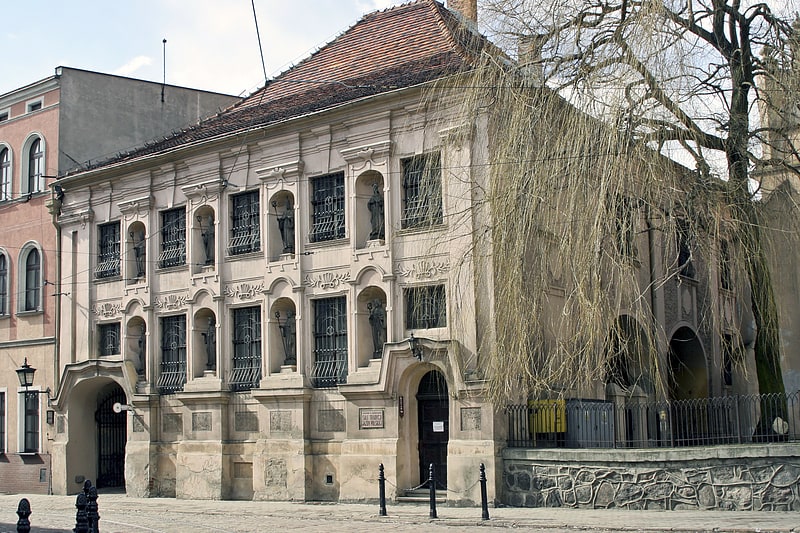
Benedictine church and monastery in Grudziadz - now Holy Spirit parish church and museum.
Address: 4 Klasztorna, Grudziądz
Kościół pw. Ducha Świętego
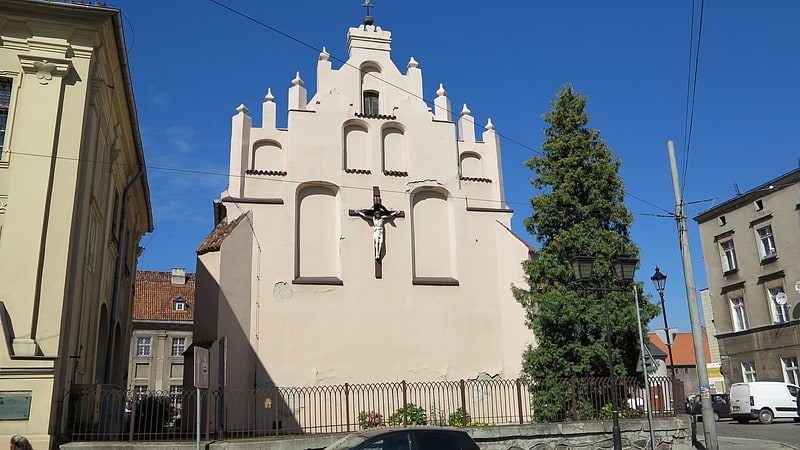
Church and monastery of the Benedictines in Grudziadz - now the parish church of the Holy Spirit and a museum.
Address: 2 Szkolna, Grudziądz
Bazylika kolegiacka pw. św. Mikołaja
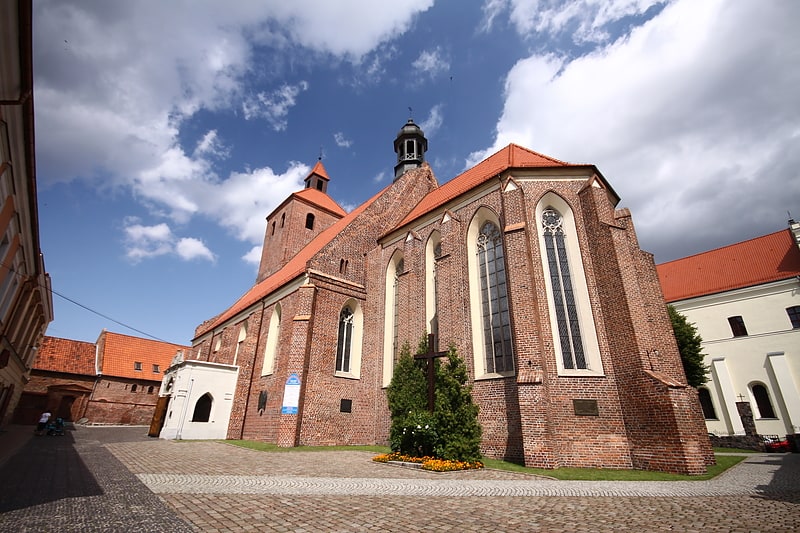
Collegiate Basilica of St. Nicholas in Grudziadz - originally a parish church, since 1992 a collegiate church, since 2010 it also bears the title of basilica minor. The temple serves as a Marian sanctuary associated with the cult of the image of Our Lady of Grace. Currently, the church and the entire parish is under the care of Rev. Canon Dariusz Kunicki.
Address: Kościelna 1, 86-300 Grudziądz
Brama Wodna
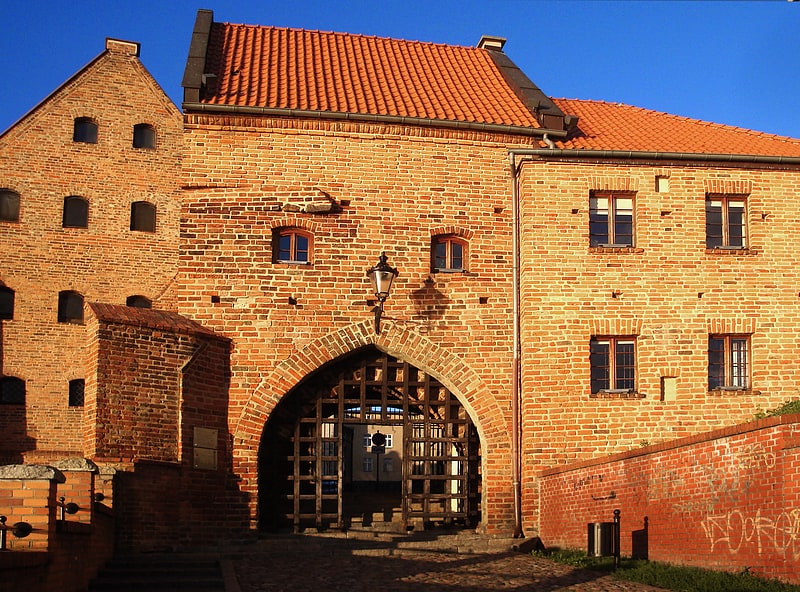
City gate
Relikty murów zamku wysokiego
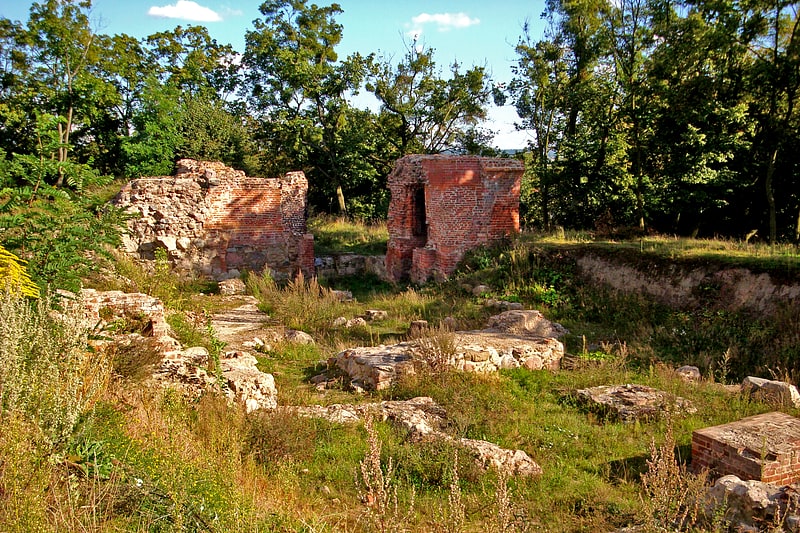
Ruins
Kościół pw. Niepokalanego Serca Najświętszej Maryi Panny
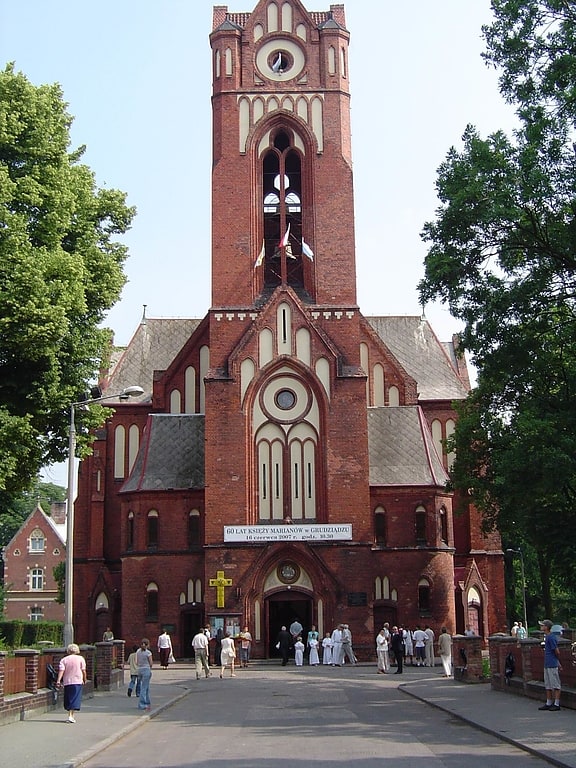
Church of the Immaculate Heart of the Blessed Virgin Mary in Grudziadz - also called "Youth Church", formerly an Evangelical church; a neo-Gothic temple from 1896-1898 at 43 Adama Mickiewicza Street.
Address: 43 Adama Mickiewicza, Grudziądz
Kościół pw. świętego Franciszka Ksawerego
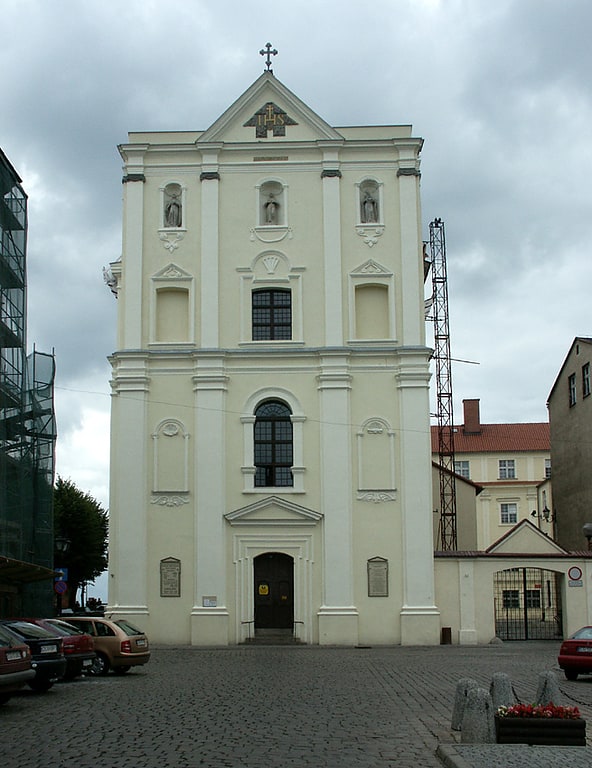
Church
Address: Ratuszowa 1, 86-302 Grudziądz
Church of the Sacred Heart

Parish of the Sacred Heart of Jesus and St. Padre Pio in Grudziądz - a Roman Catholic parish in the Diocese of Toruń, in Grudziądz I deanery, with its seat in Grudziądz. It was erected on July 1, 1934.
Address: 6-8 Ignacego Paderewskiego, Grudziądz
Ratusz miejski

Grudziądz town hall - built between 1648 and 1723 as a Jesuit college, between 1781 and 1897 it was a secular school. Since 1897 it has been the seat of municipal authorities.
Address: 1 Ratuszowa, Grudziądz
Młyn „Górny”
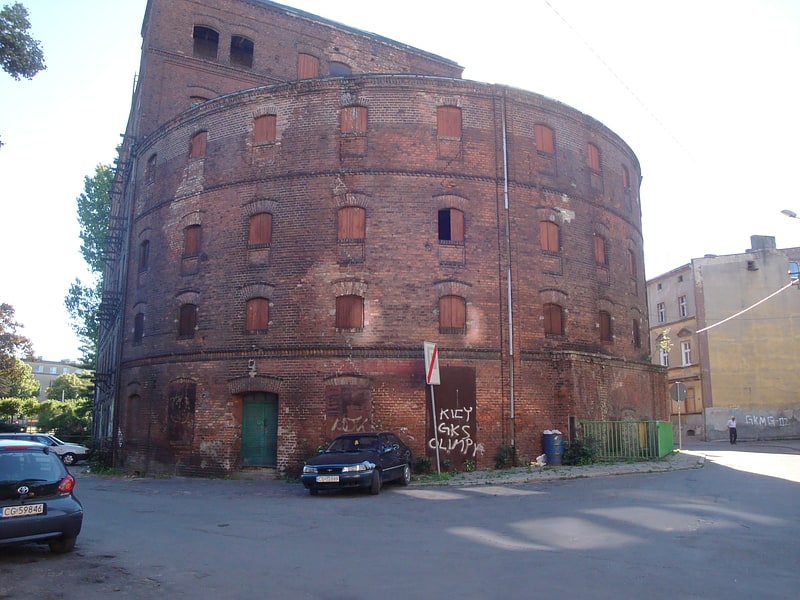
Watermill
Address: Ul. Skłodowskiej 28, Grudziądz
Kościół św. Jana
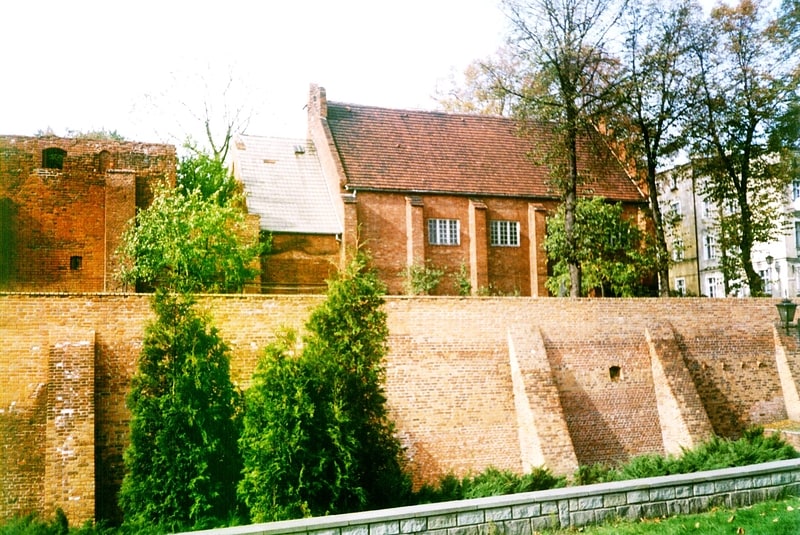
St. John's Church - Evangelical-Augsburg church at 10 Szkolna Street in Grudziadz.
Address: Szkolna 10, 86-302 Grudziądz
Kościół pw. Podwyższenia Krzyża Świętego
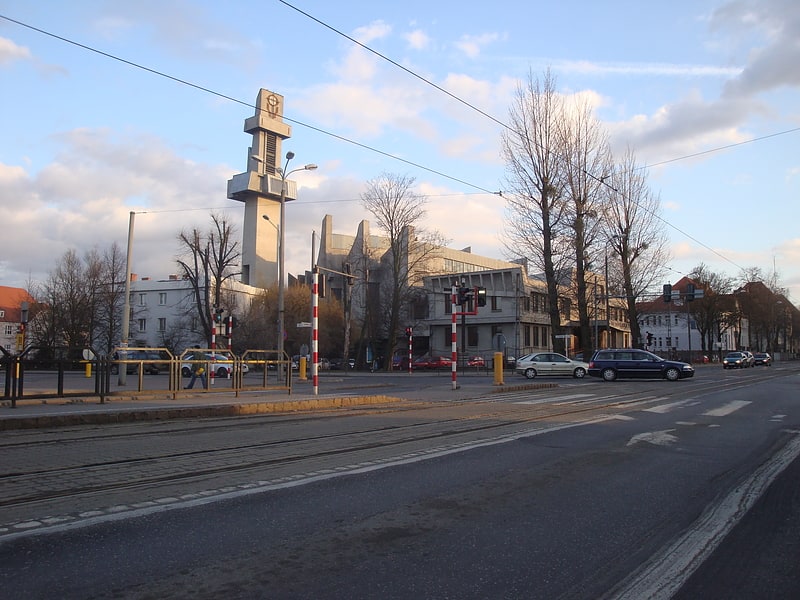
Holy Cross Church in Grudziądz - on Bydgoska Street, founded in 1911. The present church was built in 1979-1985.
The first church in Grudziadz to bear the invocation of the Holy Cross was the Reformed Church, founded in 1751 and converted into a prison chapel in the 19th century. Due to the rapid development of the southern part of the city in the late nineteenth and early twentieth century, efforts were made to build a Catholic church there. The parish priest of St. Nicholas Parish, Canon Otto Kunert, bought a vast plot of land on the corner of Chełmińska and Bydgoska Streets for this purpose and consecrated it on November 10, 1911. Despite the outbreak of World War I, construction began on 27 July 1915 and already on 1 October 1916 the consecration of the church dedicated to the Elevation of the Holy Cross took place. Funds were raised from collections, donations and the sale of the last two remaining quarters of the Gothic polyptych of Grudziadz to Malbork Castle. The designer of the church was Karl Krüger, and the construction was directed by Michal Olkowski. From the beginning, the idea was to build a larger church, intending to rebuild the newly erected building into a rectory and parish house with an auditorium. A little earlier (in the years 1914-1915) on a neighboring plot of land an orphanage for boys was built by the Sisters of St. Elizabeth, and already after regaining independence, in 1921, the Sisters of the Resurrection settled nearby. An independent parish was established on July 1, 1934. The pastor was Rev. Canon Jan Klunder, who also conducted services for the military from the barracks in this part of the city. On the opposite side of Chelminska Street a Catholic House was built. During the German occupation, the pastor and two vicars, Father Konrad Kopański and Father Edmund Nagórski, were murdered by the Nazis. The makeshift church was demolished in 1983-1984. Before that, in 1975, Witold and Jacek Nagorski designed a new, larger church, which was erected in 1979-1985, and a freestanding 46-foot bell tower was added in 1987.
The old church standing along Chelminska Street was built in the style of modernistic classicism and was similar to the neighboring barracks and orphanage. Built on a rectangular plan, towerless, covered with a hipped roof, it bore little resemblance to a religious building from the outside. The one-storey plastered elevation with rectangular windows and pilaster sections was decorated with slightly marked risalits with triangular pediments. Small blocks of a sacristy and a chapel were added on the sides. The main entrance led from Bydgoska Street. The cosy interior, covered with a ceiling, was surrounded on three sides by galleries. There were 280 seats and 500 standing places. Apart from the main altar, there were two side altars and an altar in the chapel of St. Theresa.
The concrete, angular mass of the new church was placed perpendicularly to the old one. The jagged postmodernist facade is contrasted with a calm, bright interior with galleries. A crucifix and commemorative plaques in the porch and 2 confessionals remind us of the old church. In 2001 the largest in Grudziadz 40-voice organ was built, which allows organizing concerts in the church. The stained glass windows were designed by Krzysztof Cander.
The present church is the first religious building in Grudziadz, newly erected after World War II. Many parishioners - volunteers worked on its construction. The most deserving were immortalized in the foundation act of the church.
The initiator of the construction of the current building was the long-time parish priest (1970-1997), prelate Clement Baumgart (1917-2007), whose grave is located right next to it.
Wieża Klimek
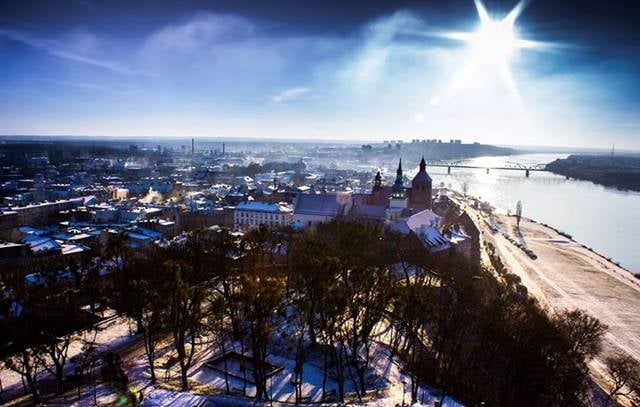
Historical place, Lookout, View point
Address: Zamkowa 9, Grudziądz